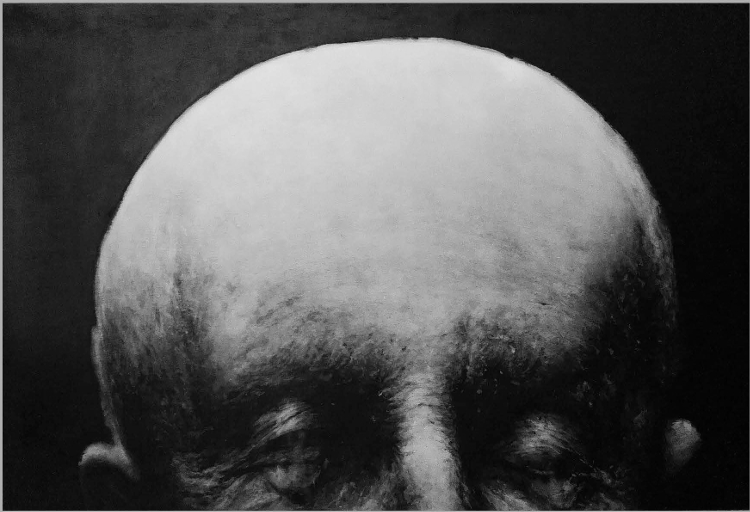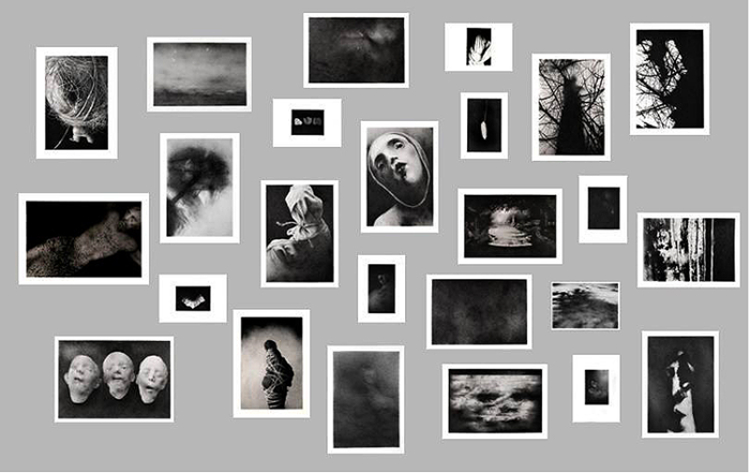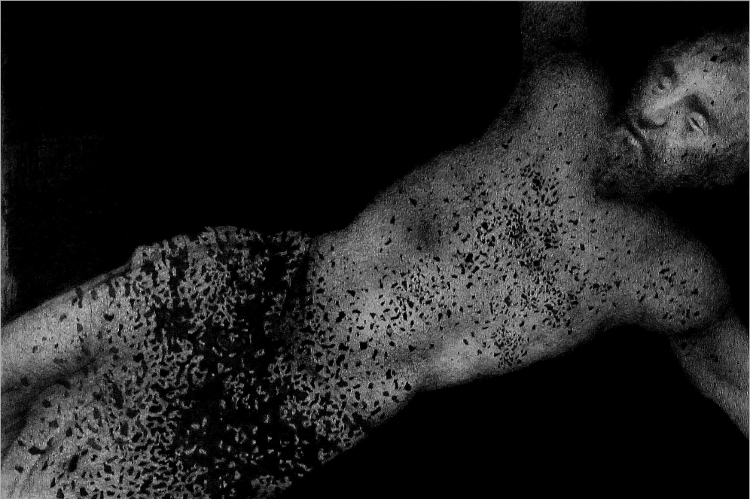
Res no és més negre que el matí lluminós del record.
Paul Celan
Paraíso del sonámbulo is a project that somehow tries to get inside the imaginary of people who have suffered psychotic and schizoaffective disorders. This project comes from the account of some of the people affected and tries to legitimate the experienced told from a rambling and distorted memory.
This way, we start a process for searching, analysing and rebuilding those permanent and vague remnants that are full of echoes by using two conceptual axis: disease and memory. In order to achieve our goal we have created a particular taxonomy for remembering those experiences perceived as images in the frontier between reality and dreams. Thanks to the talks with people who suffered these pathologies, we established the direction that made the restoration of a drawn memory possible and that was able to interpret these metaphors cut off from the senses and its temporary nature.
This way, we start a process for searching, analysing and rebuilding those permanent and vague remnants that are full of echoes by using two conceptual axis: disease and memory. In order to achieve our goal we have created a particular taxonomy for remembering those experiences perceived as images in the frontier between reality and dreams. Thanks to the talks with people who suffered these pathologies, we established the direction that made the restoration of a drawn memory possible and that was able to interpret these metaphors cut off from the senses and its temporary nature.
At this point, we have to stand out the power of the image, which can develop a subtle legacy of what is close and distant. This sovereignty is possible thanks to the construction of an artistic imaginary, understood as a process of appropriation, narration and contact. In this coordinates is where the mystery, the tension, and the concern that legitimate each action appear: “like the blind spot that causes transit and siege, all the variations and peripheral modifications that try to capture its flight and land it, unmask it in the shape of the final drawing.

Miguel Borrego (Valencia, 1963)
Master’s Degree in Management and Artistic Production of the Universidad de Murcia, Bachelor’s Degree in Fine Arts of the Universidad Politécnica de Valencia and Expert in Artistic Ceramics. Higher School of Ceramics in Manises. Associate professor of the Faculty of Fine Arts of Murcia. He was given, among others, the Beca de Escultura in the Academia de España en Roma.
We can highlight two individual projects of his recent activity: Fado (2017). El rumor, la máscara (València, 2015). La escritura ciega (Las Cigarreras, Centre de Cultura Contemporània, Alacant, 2014) and Mudanza (Centre del Carme, València, 2013). He has exhibited his works individually and in group in different galleries: Luis Adelantado (València), Paz y Comedias (València), Kir Royal (València- Madrid), Alfredo Viñas (Màlaga), and Rafael Ortiz (Sevilla). Some of the collective exhibitions in which he has participated are ARCOmadrid, CIGE Beijing, Kiaf Seül, JustMad, Art Cologne , Positions Berlin, The Others Art Fair, Torí; ArtMadrid. Some recent publications in which he has collaborated are: Cartografies de la creativitat (Centre del Carme, 2010). A pie de cama. Miradas sobre un espacio cotidiano (Sala Parpalló, 2010) i Monstruo. Historias, promesas, derivas (Fundació Chirivella Soriano, 2013). Algunes de les publicacions recents en què ha col·laborat són: Leyenda de Paradjanov: Ensayos (editorial Shangrila) i la revista Sibila (2017) i 13 artistas valencianos contemporáneos y un homenaje des de la Reial Acadèmia de Belles Arts de Sant Carles, col·lecció Investigació & Documents de Román de la Calle (2015)
Painting award of the Real Academia de Bellas Artes de San Carlos (2017), premi d'Escultura Biennal de Meliana (2017), premi de Pintura Fira d’Agost de Xàtiva (2016).

Alberto Ruiz de Samaniego (Corunna, 1966)
Doctorate in Philosophy of the Autonomous University of Madrid. Master’s degree in Aesthetics and Arts Theory at the Instituto de Estética y Teoría de las Artes of the Autonomous University of Madrid. Tenured university professor in Aesthetics and Arts Theory of the Universidad de Vigo.
He has been the director of the Foundation Luis Seoane of La Corunna (2008-2011). He is co-director (alongside with Miguel Ángel Ramos) of the Collection Larva, the texts and catalogues of art and aesthetics and the Editorial Maia-Abada.
Cultural critic and curator of exhibitions. Award Espais to art reviews. Curator of the Spanish Pavilion of the 52nd Edition of the Biennale di Venezia.
He has published the following books: Maurice Blanchot: una estética de lo neutro (Universidad de Vigo, 1999), Semillas del tiempo (Pontevedra, 1999), La inflexión posmoderna: los márgenes de la modernidad (Akal, 2004), James Casebere (Ed. Mímesis, Oporto, 2.005), Belleza de otro mundo. Apuntes sobre algunas poéticas del inmovilismo (Cendeac, Murcia, 2005), Paisaje fotográfico. Entre Dios y la fotografía (Ayuntamiento de Alcobendas, colección Arte Público y fotografía, 2007), Ser y no ser. Figuras en el dominio de lo espectral (Micromegas, Murcia, 2013), Las horas bellas. Escritos sobre cine (Abada editores, 2015), Negro teatro de Jorge Molder (Ed. Sistema Solar, 2015), and in collaboration with Miguel A. Ramos: La generación de la democracia. Nuevo pensamiento filosófico en España (Alianza/Tecnos, 2002). She has worked as literary editor of the book: Mitos de fin de siglo (Pontevedra, 2.000). He has curated exhibitions of Antón Lamazares, Xesús Vázquez, Chema de Luelmo and Manuel Vilariño, as well as several contemporary art exhibitions (La Isla Futura: arte joven cubano; Arte y nihilismo; 5000 años de arte moderno; Campos de la imagen. Grafías de los hechos y del pensamiento). He has also curated in the Foundation Luis Seoane the samples Georges Perec: Tentativa de inventario; Atlantikwall. Arquitecturas bélicas en las playas del oeste; Andrei Tarkovski: fidelidad a una obsesión; Cabañas para pensar; La escultura en Fritz Lang; unterwegs: al paso de Walter Benjamin; Roland Topor: toporgrafías o Xesús Vázquez: nieve negra.
He has collaborated in the following magazines and publications: Arte y Parte, Revista de Occidente, Lápiz, Sibila, Archipiélago, Anthropos, Sublime, Dardo, Wart, Papel Alpha, El Urogallo, Creación, Diario 16, El Correo Gallego, Ars Mediterranea, Exit, Frontera D, etc.
He is also the translator of Maurice Blanchot (La bestia de Lascaux; El último en hablar and El instante de mi muerte; La locura de la luz, in the publisher Tecnos), and Jean Christophe Bailly (La llamada muda: Ensayo sobre los iconos de El Fayum, ed. Akal), and the Diccionario d'estética de l'editorial Akal, of which he is also a collaborator of the Spanish entries.













